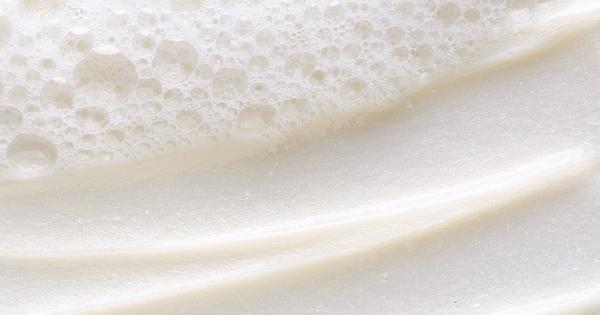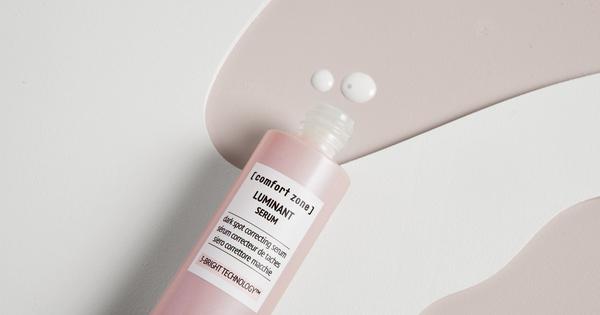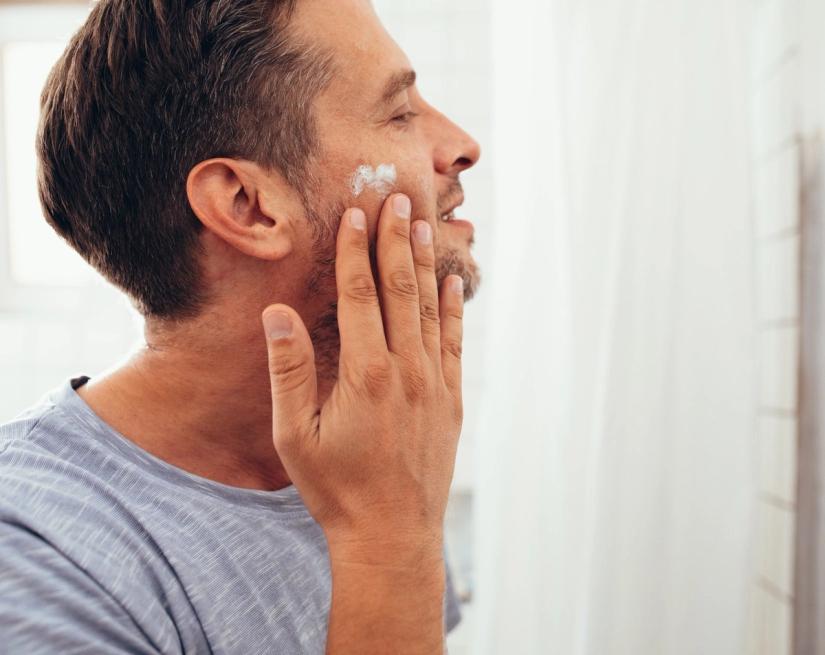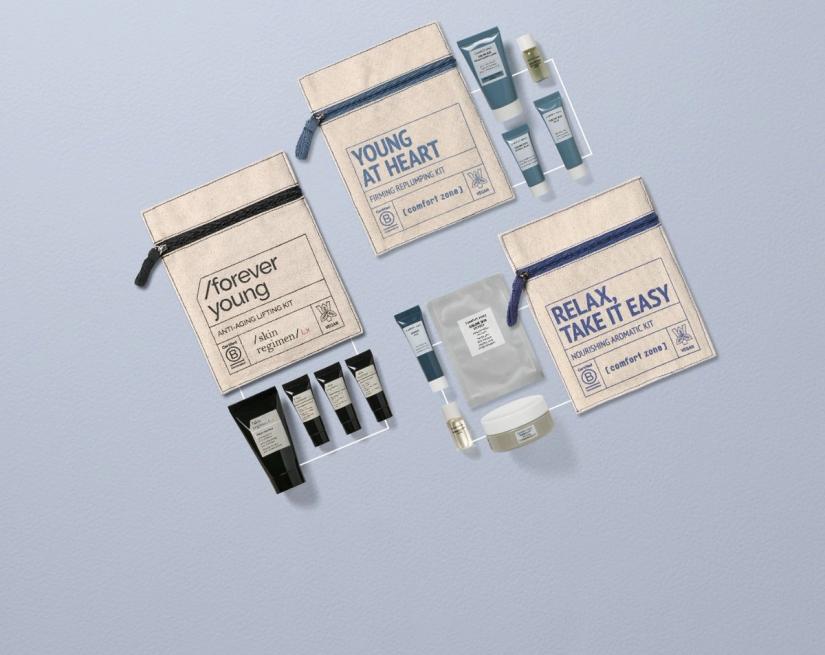skin care
How To Get Rid of Blemishes
Maria Giulia Simonazzi | International Training Manager
10 min read

From dark spots to acne, blemishes can impact both skin health and self-esteem. Though not typically life-threatening, many still seek treatment for cosmetic reasons. If you are prone to blemishes, you may be looking for ways to improve skin tone and attain clearer skin. In this blog, we are outlining the different types of blemishes, their underlying causes, and how to effectively treat them. Keep reading to learn all about caring for blemish-prone skin.
"Although there are many reasons and causes for blemishes, a key factor is exfoliation, with the appropriate ingredients, whether for purifying and reducing clogging, or anti-inflammatory brightening for even tone. Choose wisely."
Elisabeth Nehme - Global Brand Ambassador Comfort Zone
Understanding Blemishes
A blemish is a common skincare condition that affects the appearance of the skin. While technically any mark or discoloration can be described as a blemish, it is most commonly referred to as acne. These marks may result from excess oil production, hormonal changes, inflammation, or prolonged sun exposure. Beyond physical effects, blemishes can lead to feelings of self-consciousness and low self-esteem. In order to effectively treat blemishes, it is important to recognize the various types, including pimples, blackheads, whiteheads, and dark spots.
Pimples
Pimples are inflamed, pus-filled lesions that develop when pores become clogged with dirt, oil, and bacteria, specifically propionibacterium acne, a bacteria that is present in oily pores. This bacteria irritates the skin, causing redness, swelling, and the accumulation of pus. If these pimples are not removed correctly, the formation of dark spots can occur.
Blackheads and Whiteheads
Blackheads and whiteheads, both known as comedones, are types of acne that form when oil and dead skin cells get trapped in the pores. Blackheads are tiny black dots on the skin, forming when the pore is open and gets exposed to air, causing it to darken. Whiteheads, on the other hand, result from clogged pores where the bacteria inside is not exposed to air, resulting in small white bumps. Though visually different, both can cause uneven skin texture.
Dark Spots and Age Spots
Though the terms “dark spots" and “age spots” are often used interchangeably, they may develop from different causes. Prolonged sun exposure and inflammation can contribute to both, causing redness, swelling, and irritation. Age spots, however, are primarily associated with the aging process. To effectively treat blemishes, it can be helpful to use products that soothe inflammation.
- Remedy for Inflammation: To soothe irritated skin and promote healing, our Remedy collection is designed to soothe and nourish the skin. Choose from face creams, cleansers, and serums that contain Marula Oil, known for its nourishing effect and anti-inflammatory products.
- Active Pureness for Acne: Use Active Pureness skin care products to cleanse, tone, and exfoliate the skin to reduce the appearance of blemishes. This collection contains salicylic acid, known for penetrating pores, exfoliating dead skin cells, and helping to control excess oil production, making it highly effective for acne-prone skin.
- Luminant for Dark Spots: Proven to target dark spots and help fade hyperpigmentation, our Luminant collection is designed with brightening agents like vitamin C and licorice extract that evens out skin tone and radiates the skin.
Factors Influencing Blemishes
Hormonal changes can influence oil production, clogged pores, and inflammation, resulting in the development of blemishes. Fluctuation of hormone levels during puberty, menstruation, pregnancy, and menopause, can all contribute to blemishes forming. Other factors such as sun exposure and lifestyle choices can also affect skin condition. Understanding how different factors impact the development of blemishes can help you effectively treat them.
Puberty and Adolescence
The body goes through many changes during puberty. This includes a surge in hormones, called androgens, that cause the skin to produce more oil. Because of this hormonal change, it is more common for teens to experience acne.
Menstrual Cycle
Hormone levels fluctuate as part of the natural menstrual cycle. The rise and fall of hormones during this time can affect the skin. Breakouts are common for many through menstruation, however, some women may notice premenstrual acne flare-ups due to oilier skin during this part of the cycle.
Pregnancy and Menopause
Pregnancy and menopause are times when women may experience a hormonal imbalance that may lead to an increase in sebum production, resulting in the development of blemishes. When experiencing these life stages, it is important to adjust skincare routines accordingly.
Sun Exposure
Prolonged sun exposure may worsen existing blemishes or even contribute to post-inflammatory hyperpigmentation. Using a broad-spectrum daily protects the skin, helping to reduce the development of blemishes and dark spots.
Pollution and Lifestyle
Exposure to pollutants may negatively impact the skin by damaging its protective barrier. Prioritizing protective skincare habits and making healthy lifestyle choices can help support the skin’s overall well-being.
Treatment Options for Blemishes
The effective treatment of blemishes involves different approaches, taking into account skin type, severity of blemishes, and the type of care you prefer.
Spot Treatment
Spot treatment is one of the most common and accessible ways to treat specific blemishes. Over-the-counter options containing benzoyl peroxide and salicylic acid are targeted approaches aimed at drying out pimples and clearing clogged pores. Because of the potency of these active ingredients, it is recommended to test a small amount on the skin to avoid potential side effects such as dryness or irritation. Gradually introducing spot treatments can help minimize adverse reactions.

Home Remedies
There are DIY remedies you can incorporate into your skincare routine at home to help naturally reduce the appearance of blemishes, such as:
- Aloe Vera: Aloe vera contains anti-inflammatory and soothing properties that help reduce redness and irritation. Apply a small amount directly to blemishes and let sit before gently cleansing the skin.
- Apple Cider Vinegar: Apple cider vinegar is known for its antibacterial properties that help unclog pores and improve skin texture. When used as a spot treatment, dab diluted apple cider vinegar directly onto the blemish with a soaked cotton ball.
- DIY Masks (Egg White, Lemon Juice): Egg white masks are known to help tighten pores and prevent acne. However, caution should be exercised when incorporating lemon juice because of its potential to irritate sensitive skin. Mix an egg white with a tablespoon of lemon juice and apply the mixture to the entire face or blemish.
Professional Treatments
Dermatologists and skin care spas offer personalized treatments tailored to your skin’s unique needs. The most common solutions include:
- Chemical Peels: These non-invasive treatments are typically performed in-office where a chemical solution is applied to the skin to promote skin cell turnover to improve overall skin tone. Depending on the severity of the blemish, chemical peels are available in superficial, medium, and deep concentrations.
- Retinoids: Retinoids, derived from vitamin A, are known for their anti-aging effects, helping the skin to produce collagen. The regular application of retinoids can cause a reduction in acne, more even skin tone, and reduced skin inflammation. Though retinoids can be highly effective, they may cause potential side effects, including dryness and sensitivity.
- Acne Scar Treatments: For those dealing with lingering acne scars, there are various treatments available to help improve their appearance. These may include laser therapy, microneedling, or dermal fillers. It’s important to consult a professional for personalized advice as the best treatment option will depend on the type and severity of the scars.
Skincare Routine for Blemish-Free Skin
Before establishing a routine, it’s essential to understand your skin type and specific concerns. What works for one person may not be suitable for another, so customization is key.
Selecting a Gentle Cleanser
Choose a mild, non-comedogenic cleanser that suits your skin type—whether it's dry, oily, or a combination. Cleanse your face twice a day to remove impurities, excess oil, and makeup.
Frequency and Type of Exfoliation
Depending on your skin’s type and sensitivity, exfoliating the skin two to three times a week can be beneficial. Chemical exfoliants containing salicylic acid can effectively address blemishes by stimulating skin renewal.
Selecting a Suitable Toner
Toners help rebalance the skin’s pH level after cleansing and prepare it for better absorption of subsequent skincare products. Opt for alcohol-free toners with ingredients like witch hazel or rose water that balance and refresh the skin.
Consistent Moisturizing
Even if you have oily skin, applying moisturizer daily is still important, especially to prevent excess oil production. Use a non-comedogenic, hydrating moisturizer based on skin type. During your morning routine, opt for using one with added SPF for sun protection.
Daily Sunscreen Application
Make sure to apply a broad-spectrum sunscreen with at least SPF 30 every day. UV rays can worsen blemishes and cause pigmentation concerns, so protecting your skin from the sun is crucial for maintaining clear, healthy skin, and avoiding more serious concerns, including skin cancer.
Achieving Blemish-Free Skin
Effectively treating blemishes starts with understanding the type and underlying cause. Achieving clearer and healthier skin begins by adopting a holistic skincare routine that requires patience, consistency, and guidance. Consulting with a dermatologist can help you develop a personalized skincare routine tailored to your specific skin type, concerns, and goals.




